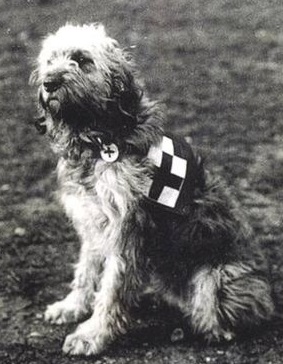
“This monument is dedicated to all the animals that served and died alongside British and Allied forces in wars and campaigns throughout time.” Animals in War Memorial, London
The British, Commonwealth and Allied forces enlisted many millions of animals to serve and often die alongside their armies. The following animals, among many others, were chosen for a variety of their natural instincts and served courageously throughout the first and second world wars.
Horses, Mules and Donkeys
Eight million horses and countless mules and donkeys died in the First World War. Mules used their tremendous stamina to transport ammunition and supplies to the front line in spite of difficult terrain and appalling climates. Many died from the horrors of shellfire, as well as through extreme weather conditions.
 Dogs
Dogs
The intelligence and loyalty displayed by dogs was valued by the forces in conflicts throughout history. They performed many duties, such as running messages, detecting mines, digging out bomb victims and acting as guard or patrol dogs. Many battled on despite horrific wounds and in terrifying circumstances to the limit of their endurance.
Casualty dogs were trained to find wounded or dying soldiers on the battlefield. They carried medical equipment to injured soldiers so they could treat themselves, and would stay beside dying soldiers so they were not alone during their final moments.
Cats
Cats are often overlooked in the history of military animals, but they were a common sight in the trenches and aboard ships during the first and second world wars. Cats served as mousers and ratters in order to protect food storage and prevent the spread of diseases. Among their ‘official’ duties, cats acted as a morale boost for many members of the forces, being embraced as mascots and pets by the soldiers with whom they served.
Pigeons
Flying at the rate of a mile a minute from the front line, from behind enemy lines or from ships or aeroplanes; pigeons flew through all weathers, even when severely wounded and exhausted, in order to carry vital messages home when other methods of communication were compromised.
For further information about the animals in war memorial fund, please visit www.animalsinwar.org.uk
